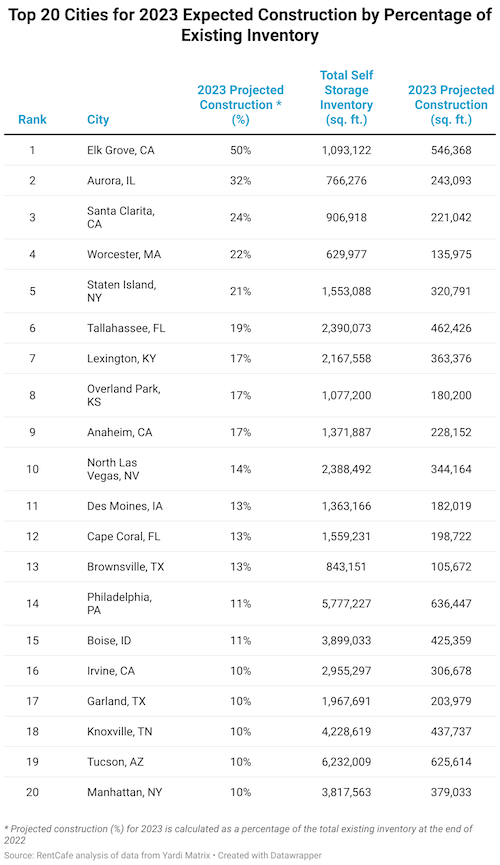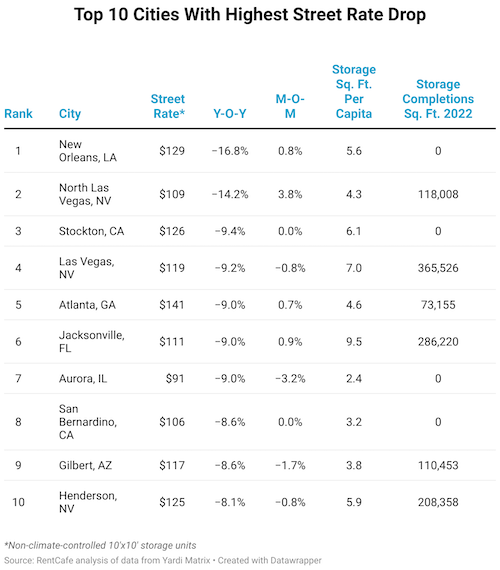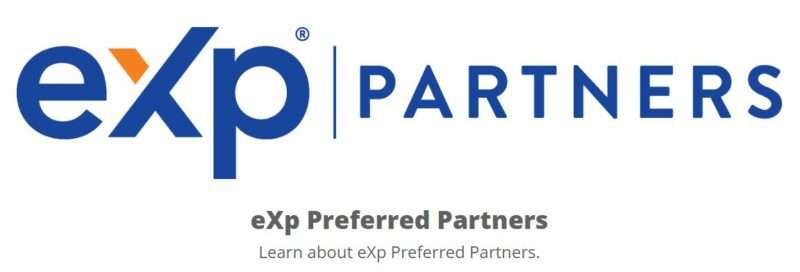


Source: Aurora self-storage market soon to change; projected to add 243,000 square feet in 2023
https://www.creconsult.net/market-trends/aurora-self-storage-market-soon-to-change-projected-to-add-243000-square-feet-in-2023/eXp Commercial is one of the fastest-growing national commercial real estate brokerage firms. The Chicago Multifamily Brokerage Division focuses on listing and selling multifamily properties throughout the Chicago Area and Suburbs.



Source: Aurora self-storage market soon to change; projected to add 243,000 square feet in 2023
https://www.creconsult.net/market-trends/aurora-self-storage-market-soon-to-change-projected-to-add-243000-square-feet-in-2023/

The Supply Shortfall
Since 2017, the shortage of housing in the U.S. has been growing at an alarming rate, with estimates now ranging from 3.8 to 6.8 million units. The lack of supply, particularly in the workforce housing sector, has resulted in historically low vacancy rates and record-high rent and home prices.
Between 2010 and 2021, household formation exceeded net housing deliveries by nearly 4.8 million units leading to a decrease in vacancy rates, making housing less affordable and hindering household formation.
To close the housing gap, at least 3.4 million units are needed within five years, and the rate of new unit delivery needs to increase by approximately 71%. This shortage is evident in the downward trend of the ratio of total housing inventory to the total number of households, which has been below 1 (meaning there is at least one household unit for every household) since Q4 2017.
The shortage also disproportionately affects younger generations, as the median age of household heads has increased from 49.0 in 2008 to 52.1 in 2021.
The current combined vacancy rate for all for-sale and for-rent housing in the US is just 2.5%, with rent and home prices growing annually by an average of 11.1% and 18.9%, respectively.
The Growth and Impact of Zoning, Land Use, and Environmental Regulations on Housing Production
Strict local zoning and environmental laws limit affordable housing by increasing development costs by 32% for multifamily projects. This reduces supply, forcing developers to charge higher prices.
Increasing regulations worsen the housing shortfall, as evidenced by a negative correlation between regulatory cases and permits issued per state. From 2006 to 2018, 49% of U.S. metropolitan areas increased land use regulations. Each regulation in a California city raises the cost of owner-occupied and rental housing by an estimated 4.5% and 2.3%, respectively.
The Workforce Rental Cohort
The shortage of new workforce housing is hurting those earning between $45,000 and $75,000 annually the hardest, as developers typically focus on either luxury apartments or affordable housing. This underserved segment has higher rents and reduced vacancies, making it an attractive investment opportunity.
Private real estate funds focused on workforce rental housing have historically returned an average net IRR of 16.4% between 2009 to 2019, outperforming luxury housing-focused funds’ average net IRR of just 10.7%. While past performance is not indicative of future results, the favorable demographic and supply/demand fundamentals make the workforce multifamily sector a positive outlook for investors.
The chronic underproduction of housing in the U.S. has made workforce rental housing an attractive and sustainable target for investment. As demand goes unmet, prices rise, and this is a trend that is set to continue in the coming years. Investors looking for opportunities in the U.S. housing market should consider investing in the workforce rental segment for durable cash distributions and sustainable capital value appreciation.

Steep competition in the housing market and low supply are heating up home prices again.
Nationally, home prices in March were 0.7% higher than March 2022, S&P CoreLogic Case-Shiller Indices said Tuesday.
"The modest increases in home prices we saw a month ago accelerated in March 2023," said Craig J. Lazzara, managing director at S&P DJI, in a release. "Two months of increasing prices do not a definitive recovery make, but March's results suggest that the decline in home prices that began in June 2022 may have come to an end."
The 10-city composite, which includes the Los Angeles and New York metropolitan areas, dropped 0.8% year over year, compared with a 0.5% increase in the previous month. The 20-city composite, which includes Dallas-Fort Worth and the Detroit area, fell 1.1%, down from a 0.4% annual gain in the previous month.
Home prices are rising again month to month, however. After seasonal adjustment, prices increased nationally 0.4% in March compared with February. The 10-city composite gained 0.6% and 20-city composite rose 0.5%.
Lazzara also noted that the price acceleration nationally was also apparent at a more granular level. Before seasonal adjustment, prices rose in all 20 cities in March (versus in 12 in February), and in all 20 price gains accelerated between February and March.
Miami, Tampa, Florida, and Charlotte, North Carolina, saw the highest year-over-year gains among the 20 cities in March. Charlotte replaced Atlanta in third place. Compared with a year ago, 19 of 20 cities reported lower prices with only Chicago showing an increase at 0.4%.
"One of the most interesting aspects of our report continues to lie in its stark regional differences," added Lazzara. "The farther west we look, the weaker prices are, with Seattle (-12.4%) now leading San Francisco (-11.2%) at the bottom of the league table. It's unsurprising that the Southeast (+5.4%) remains the country's strongest region, while the West (-6.2%) remains the weakest."
Source: Home price declines may be over, S&P Case-Shiller says
https://www.creconsult.net/market-trends/home-price-declines-may-be-over-sp-case-shiller-says/

Complacency is the most dangerous state to ignore.
It’s the moment before the market corrects and values decline. When the market goes through this initial correction, our natural tendency is to be complacent because initial corrections actually look like a cool-off period.
Then we expect the market to pick up again and continue with its growth phase.
But, the market continues to deteriorate and worries creep in as we wonder what is going on. Next, it is normal to say to yourself that your investments are good ones that they’ll ultimately come back.
When the market continues to soften until it seems there is no hope in coming back, that’s the absolute bottom of the market and the worst time to sell.
This point of capitulation is one of surrender and of asking how the government could let something like this happen.
In order to avoid loss, people will overvalue what they own.
That is what Richard Taylor, Daniel Kahneman, and Jack L. Knetsch identified with the Endowment Effect. In fact, Kahneman and Knetsch won the Nobel Peace Prize for their research in this area of behavioral economics.
In a study with Cornell undergrads, broken into groups and given identical coffee cups, Kahneman and Knetsch told one group to value the cups they owned and the other group to value the cups they would purchase.
They found the undergrads with the coffee cups were unwilling to sell their coffee cups for less than $5.25 while their less fortunate peers were unwilling to pay more than $2.25 to $2.75.
But, it was Carey Morewedge’s research into the Endowment Effect that revealed that it’s not loss aversion that leads to overvaluation, it’s ownership and identity.
Morewedge found that it’s our sense of possession that creates the feeling of an object being mine, which then becomes a part of our identity.
Why is it so difficult to sell commercial property in a market decline?
According to Brafman and Brafman, authors of Sway: The Irresistible Pull of Irrational Behavior people will go to great lengths to avoid perceived losses.
What’s more, people also succumb to their will to recover what once was. They will spend whatever it takes not to lose, be it time, money, or emotional resources.
Imagine watching someone playing craps in Las Vegas. When they are on a roll, taking in their winnings, they race through the growth phase, reaching the peak of the game.
They feel ecstatic.
But what happens when the tide turns and they start to lose?
They enter the complacency stage, call it a short turn of bad luck, and keep playing. They believe they will return to the top. But their bad luck continues.
They lose their winnings, keep playing and generate losses. They would rather hold onto the idea of getting back to where they were at almost any cost than realizing their loss and moving on to another opportunity.
People will self educate online because it is free and immediately available. A review of the search term on Google for “commercial real estate trends” returned 152 million results. A search for “commercial real estate trends YouTube” turned up 310 million results!
No doubt, an abundance of free information in the form of market data, blogs, market reports, and online opinions on what’s happening in the market is available.
When we aren’t sure what to do, we often consult friends, family, and non-commercial real estate advisors for input. Unfortunately, these people will not want to be the ones to say sell because it is easier to say no and risk being wrong than to say yes and risk not being right.
Plus, most of these folks will not have the data that you have seen here. These people are more likely to share anecdote based advice like “My friend made a killing in real estate. You should hold on, it will come back.” Remember, people who made this mistake lost in 2008-2010.
It is easy to find a traditional broker, given that 1 in 164 people in the United States today have a real estate license. According to the National Association of Realtors, there are about 2 million active real estate licensees in the United States.
The problem is that most traditional brokers do not specialize in Commercial Real Estate, Investment Sales and further specialization by property type.
eXp Commercial Chicago Multifamily Brokerage focuses on listing and selling multifamily properties throughout the Chicago Area and Suburbs.
We don’t just market properties; we make a market for each property we represent. Each offering is thoroughly underwritten, aggressively priced, and accompanied by loan quotes to expedite the sales process. We leverage our broad national marketing platform syndicating to the top CRE Listing Sites for maximum exposure combined with an orchestrated competitive bidding process that yields higher sales prices for your property.

For prospective tenants, rent prices feel higher than ever before. But if you compare the numbers to this time last year? They’re reportedly lower, based on new data from Rentometer.
In fact, based on a recent rent report by Rentometer, Chicago rent prices for all three bedroom counts (one bedroom, two bedroom and three bedroom) have decreased since this period last year.
The average rent in Q1 2023 for a three-bedroom unit was $2,287, compared to $2,252 in Q1 2022 (-2% YOY) while the average rent in Q1 2023 for a two-bedroom unit was $1,849, compared to $1,829 in Q1 2022 (-2% YOY).
And the bedroom count that reflected the most change year over year? One-bedroom. Rentometer reported a -9% decrease, with the average rent for a unit of this type being $1,392 in Q1 2023, compared to $1,528 in Q1 2022.
Source: Rent prices feeling higher than ever? It’s nothing compared to last year
https://www.creconsult.net/market-trends/rent-prices-feeling-higher-than-ever-its-nothing-compared-to-last-year/At the halfway point of the year, Cleveland, Cincinnati, Columbus, and Chicago have all seen rent growth well ahead of the national average....
